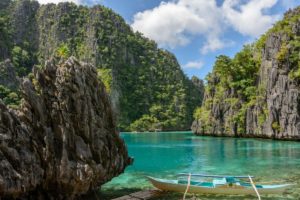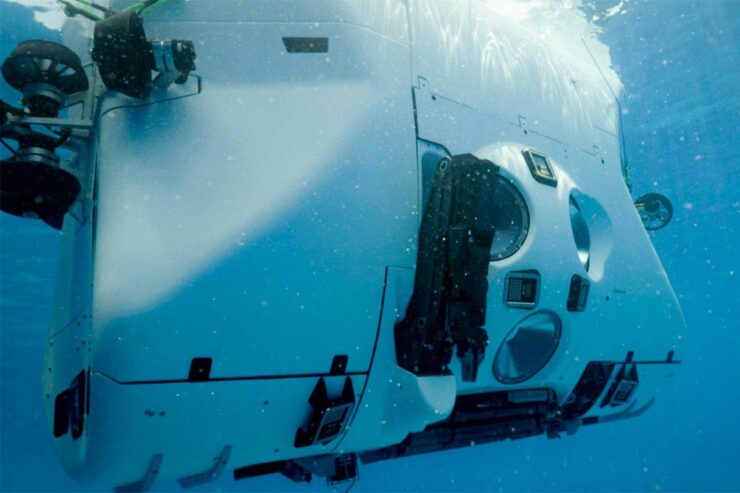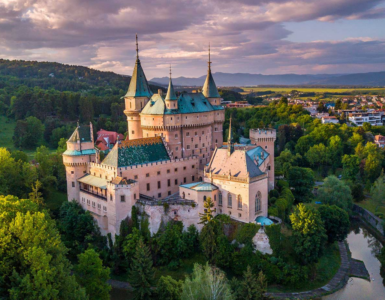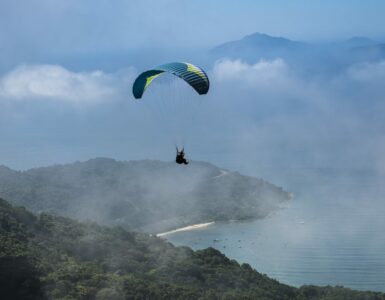There are lots of sunken ships in the sea, many of them famous such as the Titanic, but none of them are so deep as the USS Johnston. At 21,180 feet deep, it’s almost 9000 feet deeper than the Titanic. It’s also almost 5000 feet deeper than most shipwrecks that we’ve been able to access. First found in 2019, the wreck was initially thought to be another ship that sunk in the same battle, the USS Hoel. Over two years of archaeological work and a thorough survey of the entire wreck finally confirmed the remains of the USS Johnston. This leaves the wreckage of the USS Hoel still undiscovered.
Finding It
 In the spring of 2019 a remote-operated vehicle went to the site of The Battle Off Samar, a famous naval battle during World War II. It was looking for ship wreckage in the inky depth of the Philippine Sea. Navigating the Philippine Trench, it came across a portion of the wreck. The ROV sent back photos of the badly broken up wreck, but found itself unable to go deep enough to confirm the identity of the wreck. Furthermore, the depth was assumed to be almost 100 feet higher at 20,406 feet information that would only be corrected two years later.
In the spring of 2019 a remote-operated vehicle went to the site of The Battle Off Samar, a famous naval battle during World War II. It was looking for ship wreckage in the inky depth of the Philippine Sea. Navigating the Philippine Trench, it came across a portion of the wreck. The ROV sent back photos of the badly broken up wreck, but found itself unable to go deep enough to confirm the identity of the wreck. Furthermore, the depth was assumed to be almost 100 feet higher at 20,406 feet information that would only be corrected two years later.
In the spring of 2021, the Caladan Oceanic Company used a deep-sea vehicle known as “Limiting Factor” to fully explore the wreck and confirm the location as well as taking photographs. The data from this survey and the photographs were released to the public. After 75 years bringing light to the fate of the ship. It’s a somber reminder of the fates of several hundred members of the crew. The photos showcase stunning details of a naval battle that lives on in history.
State Of The Wreck
Initially it was assumed that the wreck was in pretty bad shape. The propeller, two funnels, some machinery parts, and a few large pieces of hull siding had broken off and were laying above the deeper parts of the trench, giving every indication that the wreck had become severely fragmented. However, the main part of the wreck is actually surprisingly intact. Sitting upward, despite the ship having rolled as it was going down, the main portion of the boat looks like it just sank. The bow, bridge, torpedo bays, and turrets are all easily identifiable in the pictures released by Caladan Oceanic.
Paint on the wreck showing the designation of the Fletcher Class destroyer and indicating important parts of the ship is still visible even after 75 years.
The Battle That Put It There
From October 23rd to 26th of 1944 a series of naval battles, known collectively as the Battle of Leyte Gulf took place off the coast of the Phillipines. The USA Navy squared off against the Japanese navy, with both sides suffering heavy losses. It’s known as one of the biggest battles in naval history. Ultimately this battle played a key role in determining the fate of much of the Asian seaboard and the ultimate defeat of the Japanese forces.
On October 25th, 13 USA ships, including three destroyers, fought against 23 ships from the Japanese Imperial Army off the tip of Samar Island. This battle would come to be known as the Battle of Samar. Ultimately the USA ships were stronger and while five of them sunk, the Japanese suffered heavier losses. The commander of the fleet, Admiral Kurita called a retreat at the end of the battle, effectively giving up the region to American control. After this battle all Japanese ships involved would return to port. All of the ships stayed there until the end of the war, making this the last major naval battle in Japanese Naval history.












